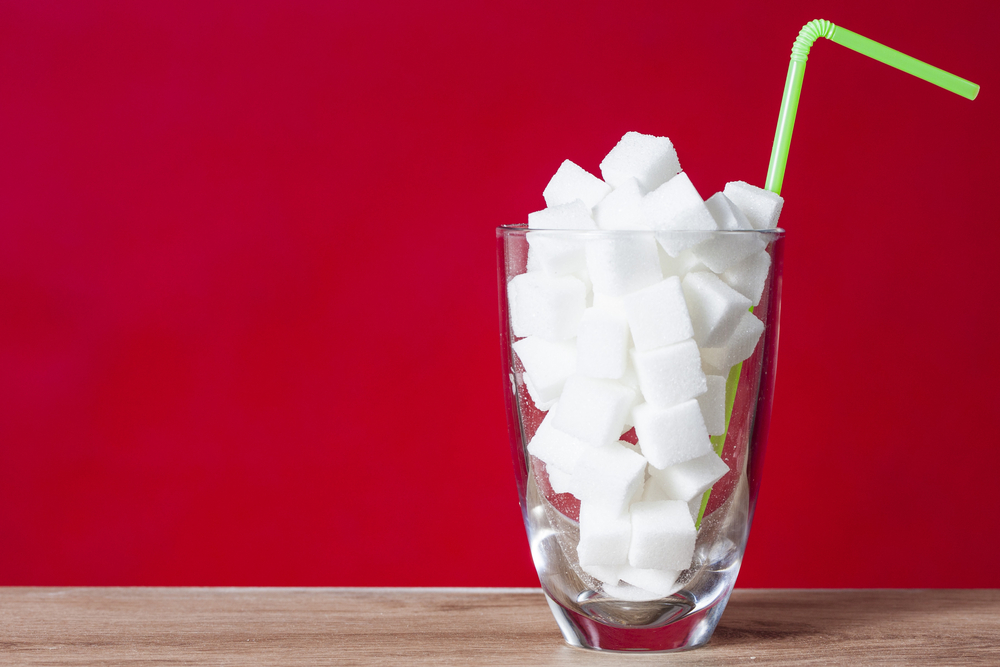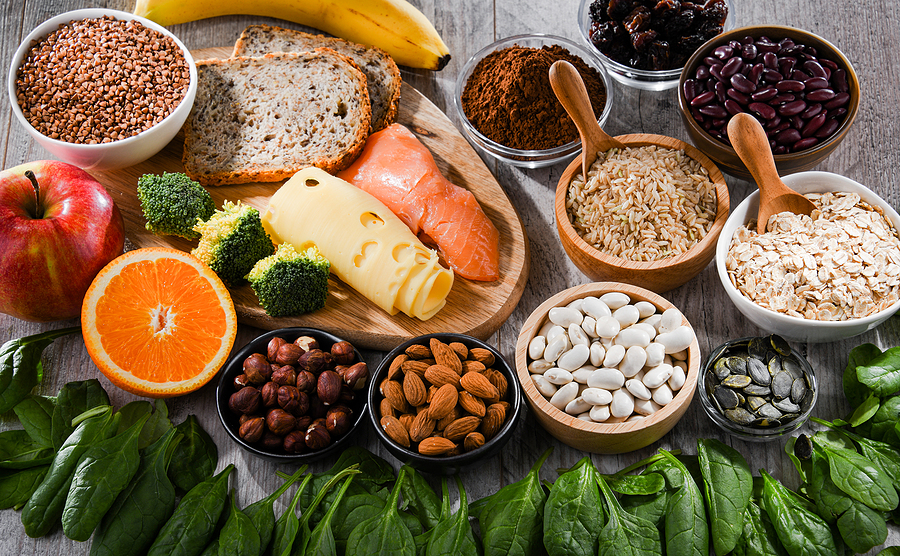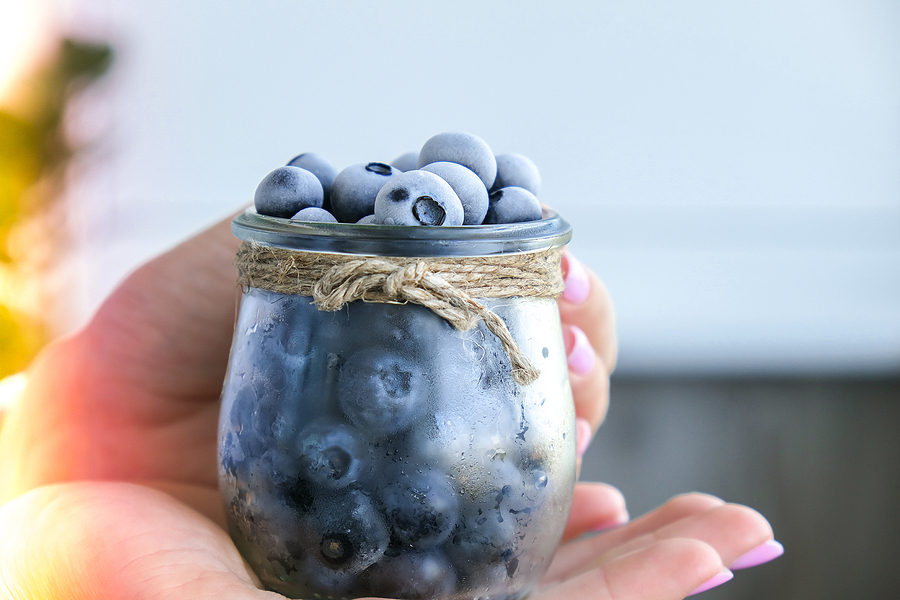When I started my practice, over 30 years ago, I truly didn’t understand the power of food. But now I know more than ever that sugar can be a game-changer for people today.
The epidemic of obesity is largely driven by the fact that sugar is an additive in many foods today – hidden in condiments, in almost every processed foods – including ones you’ve heard are healthy for you – like Greek-style yogurt with fruit! Many popular brands do indeed have additional protein but also contain many grams of sugar. Sugar increases insulin resistance, contributes to hormonal imbalance, fatigue and mood swings – and can cause weight gain, particularly around your middle.
The Seductress
She’s sexy and seductive. She’s sweet and rich and eminently satisfying. She brings us joy and comfort and pleasure. She’s our reward, our indulgence, and our gift to ourselves. She hides in plain sight and try as we might, we cannot let her go. We do our best to stay away. We set the intention to resist her. We focus our mind on other things, but like an irresistible temptress, she calls us back and makes us want her again. She is ubiquitous, unavoidable and compulsively compelling. She is … sugar.
These days so many of my patients are struggling with sugar addictions. Sugar is everywhere, hidden in so many foods and available in so many different forms, it’s hard to avoid. It goes by many different names including glucose, fructose, high fructose corn syrup, corn syrup, malt syrup, dextrose, and evaporated cane juice to name a few. And it hides in plain sight: oh how it hides!
While we expect to find sugar in candy bars and cookies, sugar is a common ingredient in fruit drinks, coffee drinks, cereals, salad dressing, ketchup, pizza and spaghetti sauce, and yogurt. Many people don’t realize that a small yogurt with fruit or fruit flavoring can often have as much sugar as a can of soda! While clearly yogurt is a better choice, the sugar levels in many processed and prepared foods can be much higher than you would ever imagine.
Especially vulnerable to high sugar content are low-fat foods. To make up for the diminished flavor resulting from the fat reduction, manufacturers often add sugars to improve the taste. (Just try looking for a low-fat salad dressing without sugar!) We know now that fat is not the enemy: actually, it is sugar. But knowing that is only part of the solution: what do we do about it?
Because most processed foods contain added sugars, our sugar thresholds are constantly increasing, making us want more and more. Even healthier forms of sweetness such as maple syrup or raw honey still provide higher levels of simple carbohydrates these days than our bodies require or desire. Sugar impacts a variety of biological functions in the body and can be compared to heroin in it’s addictability. Let’s look at the impact sugar has on our bodies and how we can reduce our sugar cravings and end our sugar addictions for good.
The Impact of Sugar on Our Bodies and Emotions
Most of us grew up associating sweets with a special occasion such as a birthday or a holiday celebration. Many of us still associate a treat with celebration and reward.
We may have gotten to help mom or grandmother lick a bowl of brownie batter or cookie dough or been rewarded with the first cookie out of the oven. We hold special meanings in our hearts for those events and for the people who loved us and shared that special treat with us.
We may even look at our parents and grandparents and think, “They grew up indulging in homemade baked goods and they were fine. What’s the big deal about a little sugar?” Back then, however, it really was a treat; it wasn’t an everyday occasion. And mom and grandma were cooking mostly from scratch, making their own meals, and controlling their own ingredients.
Today we are so busy that most of us are cooking out of bags and boxes and the prepared processed food we consume is very different than what our parents grew up eating. It’s full of artificial ingredients and loaded with sugars. So, if it were just the occasional brownie or cookie, as it was in our youth, it might be just fine. But today, it’s the treat at the end of the day on top of all of the other sugars we are consuming that causes concern.
There have always been sweets in our diets: raw honey, maple sap, fruits and berries, and dates have long been used to add some sweetness in countries around the world. In generations past, we might, for example, indulge in a tablespoon of honey, burning off those 60 calories with our physically active lifestyle. Today, our average sugar consumption is a cup of sugar a day. At 774 calories and given our more sedentary lifestyles, that’s a huge caloric shift.
But it’s not just the calories that cause concern. Sugar has been shown to feed cancer cells and has been connected to breast, ovary, prostate, rectum, lung, gallbladder and stomach cancers. Sugar can interfere with the absorption of protein, cause gastrointestinal concerns such as increased risk of Crohn’s disease, ulcerative colitis, indigestion, acidic digestive tracts, and can cause food allergies. Sugar has also been connected to kidney disease, high blood pressure, asthma, arthritis, inflammation, diabetes and insulin resistance and heart disease. In fact, one cardiologist even declared that virtually all of his patients who suffered heart attacks also had above normal blood glucose levels.
Related article: Sugar and Inflammation: Sugar’s Impact on Your Health
Sugar raises your fasting glucose levels, which can lead to hypoglycemia. And we all know what happens when your blood sugar levels crash after a sugar spike! More aggressive behavior and a reduced immune system are also impacts of sugar, especially for children. Research has connected children’s behavior to their level of sugar consumption. When your body experiences the sugar crash post consumption, blood sugars fall and the brain is affected since glucose is its primary fuel.
So we have a soda, blood sugar goes up, the body releases insulin in response and the insulin increase causes the blood sugar to drop. As the ups and downs continue, the stress on the body causes a fight or flight response that results in a release of adrenaline. Aggressive behavior, anxiety, attention struggles and hyperactivity can occur not surprisingly.
It’s hard enough to manage your children’s sugar intake at home, but harder still at school. Even if you pack a healthy lunch, there is a plenitude of treats accessible. More than 80% of schools have contracts with soda companies, so whether it’s a soda or a fruit juice, an “energy” drink, or even flavored milk, high sugar options abound in schools.
There are some success stories, however. One Georgia elementary school adopted a sugar-free policy in 2005 making every parent and child sign an “Achieving Excellence Through Nutrition” contract. Sugary foods are prohibited and are taken from the children if they show up at school. School menus were changed; a good night’s rest and a healthy breakfast were expected.
The results included a 28% drop in bad behavior referrals by teachers, a 30% decrease in visits to the school nurse, and higher test scores. These measures may be extreme, but so are the results!
Sugar also wreaks havoc on our mineral absorption. Minerals play a critical role in digestion, maintaining our pH balance and nerve impulse transmission. When our mineral balance is out of alignment, we can experience trouble sleeping, anxiety, asthma, tooth decay, and weaker bones. Minerals function in a proper balance and when one mineral is out of proportion, the others typically follow suit.
Studies have shown that sugar causes the body to release calcium and magnesium, throwing the calcium and phosphorous ratio out of balance. In an attempt to rebalance the ratio, the body will pull calcium from teeth and bones. But because the alignment of calcium, magnesium and phosphorous remains unbalanced, the calcium isn’t fully or properly utilized and it will likely be excreted through the urine or land as a kidney or gallstone. So teeth and bones pay the price for the excess sugar, but the problem still isn’t solved.
Sugar Addiction – and How to Beat It!
We know that addiction to sugar is real, as withdrawal symptoms have been documented including low energy, mood swings, headaches and the relapse desire to consume more. Sugar increases pleasure-yielding opiates in the brain, similar to morphine and heroin, resulting in strong cravings that we cannot ignore. Mood enhancing neurotransmitters such as serotonin and endorphins are released when we eat sugar, making us feel relaxed or energized. We become addicted to the energy surge or the false sense of calm that they provide and return to them for that feeling over and over again.
At the same time, if you are consuming sugar in combination with poor sleep, stress, or adrenal fatigue, the likelihood of intense sugar cravings can increase as the sugar perpetuates a cycle of more sugar cravings that repeats over and over again. Excessive sugar actually re-wires the brain creating a biochemical dependency that will be very hard to ignore.
Even artificial sweeteners without calories trick our brain into wanting that sweet flavor and they come with a host of other side effects. But suffice to say, aspartame (NutraSweet or Equal), saccharin (Sweet ‘n Low or Sugar Twin) sucralose (Splenda) are not good substitutes and should always be avoided.
So many women tell me that they’ve tried to cut back but they can’t seem to stop. Either they feel the withdrawal symptoms of headache, shakiness, fatigue, nausea, or depression or they are overcome by stress and the struggles of work life balance and our busy schedules. Sugar can be a sweet release, a little self-love, an antidote to the absence of pleasure and joy in our lives.
But there are things you can do to begin to wean yourself off sugar and break the cycle of addiction. Let’s look at some small steps you can take forward in the right direction.
Related article: Sugar Substitutes and the Danger of Splenda
How to Overcome a Sugar Addiction
If you love sugar, or have a sugar addiction, going cold turkey is not the best strategy. As we discussed, withdrawal symptoms will wreak havoc on your body and your willpower. So it’s best to put a plan in place to slowly decrease the amount of sugar you are consuming gradually over time.
Choose Naturally Sweet Foods
Try to indulge your sugar cravings naturally by choosing fruits, berries, dates, raisins and other sweet whole foods. While these foods still have high sugar content, they also contain nutrients and fiber and can help to satisfy a sweet tooth when a candy bar is calling your name. If you want to use additional sweetness try Stevia. It is a more natural substitute, although we are still not sure if it primes some of the receptors in a similar way as does sugar. Stay tuned for more information on that.
Read Labels
There’s no way around it if you want to beat a sugar craving. So many foods have hidden sugars you don’t even realize are there. Save your sugar intake for the things you really enjoy and remove the excess from the foods you don’t even realize have added sugar. 4 grams of sugar equals about 1 teaspoon so when you read the label and see 28 grams in a yogurt, ask yourself if 7 teaspoons of sugar is a good choice for you.
Don’t Eat Out of Habit
This may seem obvious and simple, but it’s actually neither. We often get into habits such as a 3pm snack for example, or a piece of chocolate after dinner. Try not to eat foods automatically or because that’s what you’ve always done. Instead, choose your sweet indulgences carefully, make them treats to savor, and if you don’t really desire it, skip it that day. Try working down to every other day, then every three days. I’m not saying never have your favorite treats again! But try to limit them to special occasions rather than every day and when you do partake, eat them slowly and savor each and every bite. Also try to eat them combined with healthy fats such as butter, eggs, cream, nuts or avocado to slow the sugar absorption.
Examine Your Emotions
Many of us grab sweet treats when we are tired, stressed, frustrated, angry, or depressed. We tell ourselves we deserve to feel better or we simply reach for it automatically, knowing the calmness or energy surge it provides will help us cope. If you’re feeling an urge for chocolate or ice cream, ask yourself if you really desire that or if what you really need is a hug or someone to listen. For more on this, read our article, “Emotional Eating.”
Prep in Advance
Have healthy options around so when you are hungry or stressed there is something else available nearby. Chop up some carrots and celery, keep a few hard-boiled eggs in your fridge, make unsweetened ice tea and keep a pitcher handy. You know what your temptations are, so find the antidote -the healthier version, and keep it plentiful so you always have another choice available in any stressful moment.
Add Fermented Foods to Your Diet
In addition to being nutritional powerhouses, many people find that when added to their diets, the fermented foods seem to help diminish sugar cravings. And if eaten at the same time as something sugary, the beneficial microflora will minimize the negative effects of the sugar as the fermented foods and drinks will use the sugar as its food.
Every culture has its own form of fermented delicacies including miso, tempeh, kimchi, kombucha, kefir, fermented pickles and sauerkraut, fermented condiments such as chutneys and even fermented yogurt and a homemade version of a fermented ginger ale. Adding more fermented foods to your diet will make the sugar you eat less damaging and will help to reduce your cravings for it over time.
Eat Foods with All Six Flavors
Ayurveda has been around for thousands of years and teaches us that there are six main flavors to food: sweet, sour, salty, bitter, pungent and astringent. When the body gets all six it is more balanced, digestion is improved and cravings are diminished. Many recipes or meals can easily contain all six, as can one simple side dish like a fruit and spice chutney, which can be fermented to add even more health (and sugar craving reducing) benefits.
Just as all six flavors bring the body back into balance, you can listen to your body and monitor how you feel after eating and use this information to bring yourself back into alignment. Your energy should be consistent and stable after a meal, not high then crashing low. Using healthy fats such as butter, olive oil, nuts and avocado can also help you to feel full, eat less and reduce cravings for something sweet.
Eat a Healthy Balanced Diet
Avoiding packaged and processed foods rich in sugar and white flour in favor of fresh organic produce and grass fed meats will help your body restore its own natural balance and make sugar less of a seductress and more of an innocent bystander in your life. Supplementing with a high quality multivitamin can also help support your body’s balance and eliminate nutritional gaps that could lead to cravings.
Try Chromium Picolinate
Chromium supplementation has been shown to help normalize blood sugar levels, improve blood sugar utilization, metabolize fats and decrease insulin requirements in patients with glucose intolerance and insulin resistance. One study tested blood sugar levels after a meal of white bread and found that a single (400 microgram) dose of chromium reduced blood sugar after the meal by 23%.
Chromium has also been shown in studies to reduce carb cravings and stabilize blood sugars, with the best results experienced by the participants with the greatest carbohydrate cravings. Chromium has been shown to reduce triglycerides by as much as 32% and while we don’t know exactly how yet, chromium plays a role in insulin signaling and has been shown to improve glucose disposal rates. If you struggle with cravings or blood sugar issues, consider chromium supplementation.
Closing Thoughts on Sugar Addiction
Sugar is one of the most powerful seductive foods that we can eat. When you stop using it, your life can be changed in the most powerful of ways.
For more information on the topic of sugar, read our article, “Insulin Resistance – Our Love Affair With Sugar.”








